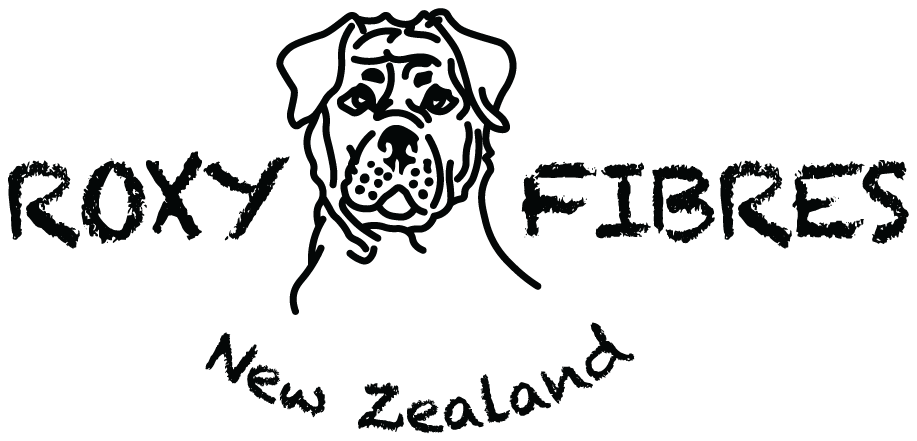Our wools are sourced from New Zealand mills only which wash, scour and spin fine New Zealand grown wool into the lovely product we can knit and craft with. There are a number of breeds in New Zealand grown for both meat and wool production. Being able to withstand New Zealand’s environmental conditions and often steep landscapes resulted in a number of interbreeding experiments, with positive results. Coming from urban Australia I hadn’t heard of a number of these, such as the Corriedale (originally a mix of Merino and longer haired breeds, such as Romney, Lincoln and Leicester), Perendale (a Cheviot Romney mix) and Coopworth (mix of Romney and Border Leicester).
All the different breeds have different traits such as particularly fine wool (Merino), fertility and mothering abilities, meat production etc. In the first half of the 20th Century most wool and meat was sent to the UK but after WW2 and the establishment of the European Economic community, New Zealand farmers needed to change tack.
Since late 20th Century there has been a much greater emphasis on genetics and artificial breeding with many more introduced breeds, such as the Finn, from Finnland, Texel from the Netherlands, East Friesian from northern Holland and Germany and the Wiltshire Horn which shed its fleece annually. (What d’ya know!!)
Back to wool quality, which is what we as knitters and crotcheters are particularly interested in, is judged by its strength, fine micron value (the thinness of the wool fibres) and staple length. The crimp of the staple gives wool its great bounce and recovery. The best known breeds in New Zealand are the Merino, producing fine quality wool of 12-24 microns and the Polwarth producing an ultra white wool of 21-25 microns. Wool from a young sheep’s first fleece is the finest.
Other Yarns
Alpaca
There are approximately 26,000 alpacas in New Zealand today. Originally, they were imported from Chile where they have been farmed for centuries high in the Andes. The peoples of Chile, Peru and Bolivia have been using these luxurious fleeces for thousands of years. Alpacas and Llamas are both members of the camelid family with Llamas descended from wild guanaco and the smaller Alpacas from Vicuna.
There are small hobby farms of alpacas all over New Zealand and most of the fleece is used in the domestic craft market. Alpacas produce a strong warm lightweight hollow hair with no lanolin which is more comfortable against the skin than wool. It ranges from 15-40 microns and is often blended with other fibres (such as wool) to improve its drape. There are 2 types of Alpaca: the Suri which produces short dense hair and the Huacaya which produces long dreadlock type hair. A typical fleece weighs about 3.5kgs. The first shearing of an Alpaca produces the finest most expensive fleece. Like sheep they need shearing once a year in Spring or Summer.
Mohair
Mohair is the hair of the Angora goat. Originally from Ankara in Turkey, it has a distinct lustre and sheen with the finest of fibres, used for clothing coming from the first 3 shears of young goats. Coarser mohair fibre from older goats is used in carpets, furnishings and outerwear. South Africa is today the biggest producer of mohair.
Goats are shorn twice a year. Mohair is strong, lustrous, lightweight and lacks scales on the fibre so it does not felt. It’s also great for sensitive skin, is moisture wicking and doesn’t crease. Mohair is often blended with other yarns to add these qualities. It should be hand washed as machine washing will break the fibre. Mohair fibres are about 25-40 microns, similar to wool, but is more resilient, smoother and stronger due to its long 4-6” staple length. (Merino has a staple of about 4.5”) A goat can produce 2-3 kg of hair a year. New Zealand mohair is sent to South Africa for second stage processing and from there to Italy, Japan and China.
Angora
Angora is the undergrowth hair from shorn or plucked Angora rabbits. It is 10-15 microns, incredibly fine, so it needs to be blended with other fibres to add strength and resilience.
Even though an Angora rabbit can produce up to 400 grams of hair per year, the farming practices needed to obtain it are questionable.
Cashmere
Cashmere goats produce a fine luxurious undercoat, especially near the neck region, which is only about a quarter of its total fleece. A goat will produce only about 150 grams of cashmere a year, compared to a sheep’s fleece of 1-13 kg, which explains why it is such an expensive yarn. Cashmere is known for its luxuriously soft feel, as it is extremely fine at only about 18 microns, similar to superfine merino.
